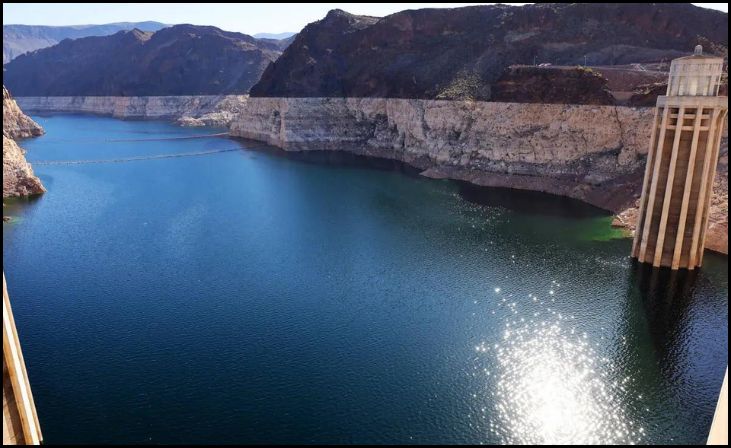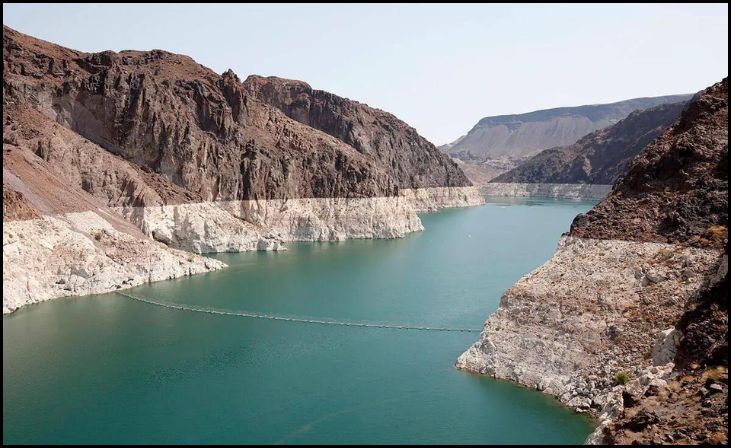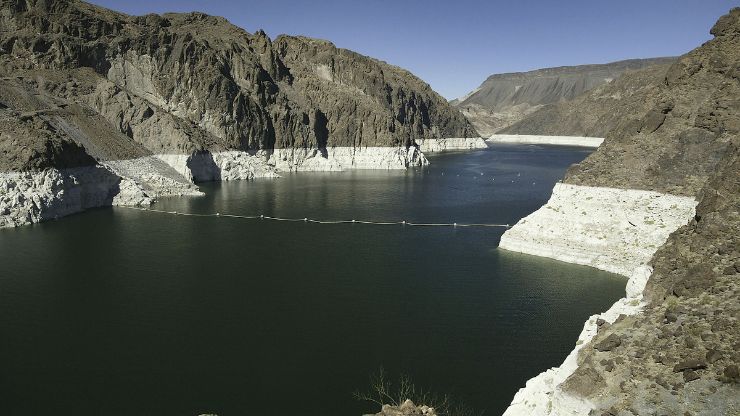Discover the remarkable shifts in Lake Mead’s water levels, reflecting an unprecedented trend unseen in years. As a pivotal reservoir on the Colorado River, Lake Mead’s fluctuations hold significant implications for water management, ecosystems, and communities across the southwestern United States. Understanding the causes and consequences of these changes is crucial for navigating the challenges of water resource management in the region. Join us as we delve into the factors driving these fluctuations and their far-reaching impacts.
Table of Contents
ToggleHistorical Context of Lake Mead Water Levels
Since its formation with the completion of the Hoover Dam in the 1930s, Lake Mead has been a crucial reservoir on the Colorado River, serving as a lifeline for water resources in the southwestern United States. Over the decades, the lake has experienced fluctuations in water levels influenced by various natural and human-driven factors. Historically, water level changes in Lake Mead have followed cyclical patterns, with periods of both elevation and decline. However, in recent years, the region has faced unprecedented challenges, particularly with prolonged drought conditions exacerbating water scarcity issues.
In the early 2000s, declining snowpack levels in the Rocky Mountains, which feed into the Colorado River, began to impact the inflow of water into Lake Mead. Concurrently, increased water demand from growing populations and agricultural activities further strained available water resources. By the mid to late 2000s, the effects of climate change became increasingly evident, with rising temperatures exacerbating evaporation rates from the lake’s surface.
These compounding factors led to a significant decline in Lake Mead’s water levels, reaching historic lows by the early 2020s. Overall, the historical context of Lake Mead’s water levels reflects a complex interplay of environmental, climatic, and socioeconomic factors, highlighting the need for adaptive water management strategies to address current and future challenges.
Also Read: 7 Must-See Art and Architectural Wonders Across Europe
Factors Driving Water Level Changes

Several interrelated factors drive the changes in water levels observed in Lake Mead, with both natural processes and human activities playing significant roles. One primary factor is the impact of prolonged drought conditions in the region. Reduced precipitation and snowpack levels in the Rocky Mountains, which feed the Colorado River, contribute to diminished inflows into Lake Mead, leading to lower water levels.
Human-induced alterations to the water cycle also play a substantial role. Increased water demand for agriculture, urban development, and industry places additional strain on the Colorado River system, further depleting water supplies available for storage in Lake Mead. Additionally, the construction of dams and diversions upstream of Lake Mead can affect the timing and magnitude of water flow, influencing reservoir levels.
Climate change exacerbates these challenges by amplifying drought conditions and altering precipitation patterns, leading to more frequent and severe water shortages. Rising temperatures also increase evaporation rates from the lake’s surface, further reducing water levels. Overall, the combination of prolonged drought, increased water demand, alterations to the natural water cycle, and the impacts of climate change collectively drive the changes in water levels observed in Lake Mead, underscoring the need for comprehensive water management strategies to address these complex challenges.
Consequences of Water Level Changes
The consequences of water level changes in Lake Mead have profound implications for various aspects of the region’s environment, economy, and society.
One significant consequence is the impact on water availability. Decreased water levels in the reservoir reduce the volume of water accessible for municipal, agricultural, and industrial use, leading to water shortages and potentially affecting millions of people who rely on the Colorado River for their water supply.
Don't just scroll, subscribe!
BuzzTrail's unique web-stories are the cure for boredom you've been waiting for.
The changes also affect hydropower generation. As water levels decline, the capacity for hydroelectric power generation at facilities such as the Hoover Dam diminishes, potentially disrupting electricity supply and increasing reliance on alternative energy sources. Furthermore, the ecosystem and biodiversity of the region are affected. Lower water levels can result in habitat loss for aquatic species, disruption of migration patterns, and changes in water quality, impacting the overall health of the ecosystem.
Additionally, the recreational and tourism industries dependent on Lake Mead suffer from reduced water levels, affecting activities such as boating, fishing, and camping, which in turn can have economic ramifications for local communities. Overall, the consequences of water level changes in Lake Mead highlight the interconnectedness of water resources with various aspects of human and natural systems, underscoring the importance of sustainable water management practices to mitigate these impacts.
Management and Adaptation Strategies

Addressing the challenges posed by fluctuating water levels in Lake Mead requires a multifaceted approach encompassing management and adaptation strategies tailored to the region’s unique circumstances. One key strategy involves implementing water conservation measures to reduce demand and enhance efficiency in water use across various sectors, including agriculture, urban areas, and industry. Encouraging the adoption of water-saving technologies and practices can help alleviate pressure on the reservoir.
Additionally, collaborative efforts among stakeholders are essential for effective water management. This includes coordination between states, water agencies, tribal nations, and other relevant entities to develop and implement comprehensive water management plans that prioritize sustainability and resilience.
Investments in infrastructure upgrades and diversification of water sources can also bolster resilience to water scarcity. This may involve expanding water storage capacity, investing in desalination plants, and promoting alternative water sources such as recycled wastewater.
Furthermore, enhancing monitoring and forecasting capabilities can provide valuable insights into future water availability and inform decision-making processes. Improved data collection, modeling, and communication of water-related information can support proactive planning and adaptive management strategies.
Overall, a combination of conservation, collaboration, infrastructure investment, and data-driven decision-making is crucial for managing and adapting to the impacts of fluctuating water levels in Lake Mead, ensuring the long-term sustainability of water resources in the region.
Also Read: The Most Stunning Natural Attraction in Each State
Future Outlook
The future outlook for Lake Mead’s water levels is characterized by uncertainty and challenges. Continued climate change is expected to exacerbate drought conditions and further stress water resources in the region. Proactive measures, including enhanced water management practices, conservation efforts, and investments in infrastructure, will be essential to mitigate the impacts of declining water levels. Collaborative initiatives and adaptive strategies will be crucial for ensuring the resilience of ecosystems, communities, and economies dependent on Lake Mead’s waters. Staying informed, proactive, and committed to sustainable water management will be imperative for navigating the complexities of future water availability in the region.
Conclusion
In conclusion, mastering the tuning process for turbocharged engines is a blend of art and science. By implementing the ten expert tips outlined in this guide, you’ll not only maximize performance but also ensure the longevity and reliability of your engine. From maintaining proper boost levels to fine-tuning fuel and ignition parameters, each tip plays a crucial role in unlocking the full potential of your turbocharged setup. Remember to approach tuning with caution and patience, as small adjustments can yield significant gains in power and efficiency. Whether you’re hitting the track or cruising the streets, these tuning tips will undoubtedly elevate your driving experience to new heights. Get ready, rev your engines, and enjoy the thrill of handling turbocharged performance like a real fan!
FAQs
How often should I tune my turbocharged engine?
How often should I tune my turbocharged engine?
It’s recommended to tune your turbocharged engine at least once a year or whenever you make significant modifications to your vehicle’s performance components.
Can I tune my turbocharged engine myself?
Can I tune my turbocharged engine myself?
While it’s possible to perform basic tuning adjustments, it’s highly recommended to consult with a professional tuner who has experience with turbocharged engines for optimal results.

